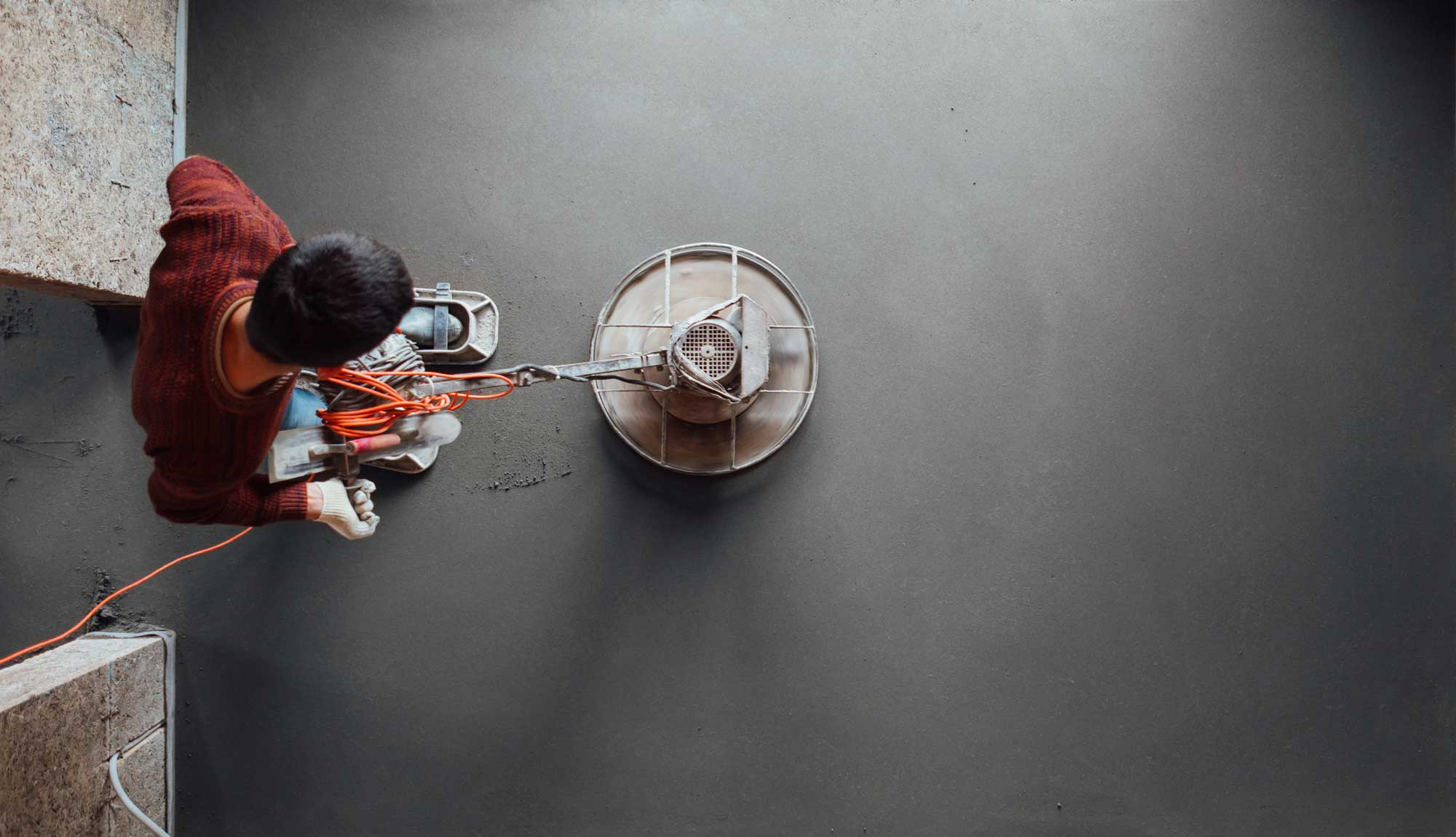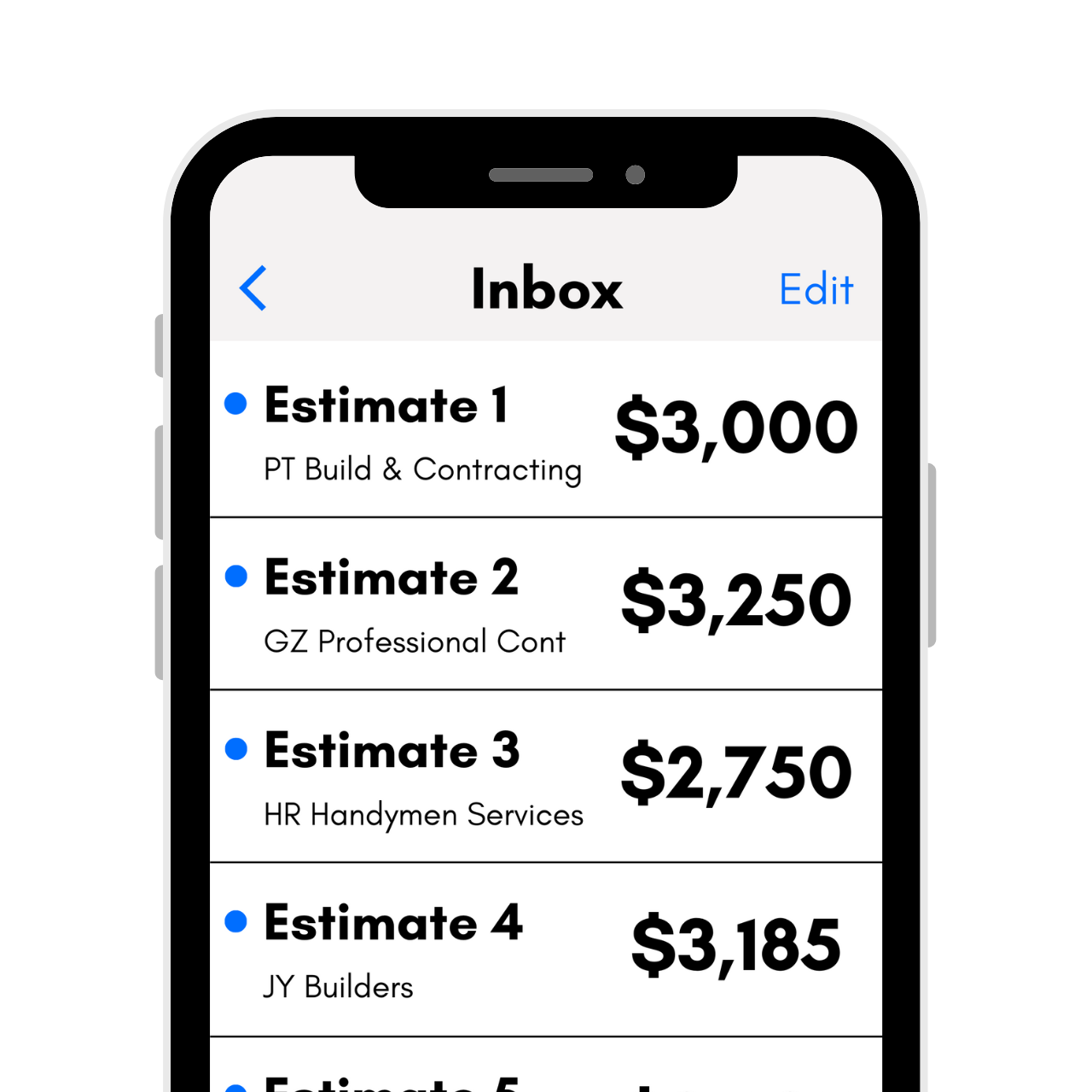Cost to Install a Concrete Slab – 2025 Price Guide
A concrete slab provides a solid, finished floor in a building and a solid base for a structure. Slabs can be used for foundations and may be different thicknesses depending on use.
Read more about the options available for a concrete slab and the cost to install one.
2025 Concrete Slab Costs
Calculate local project costs by entering your zip code.
Custom Location
| Typical Price Range | $3,600 - $7,200 |
| Minimum Price | $1,000 |
| Maximum Price | $10,000 |
| Typical Price Range (per cu yd concrete) | $125 - $165 |
Get free estimates from contractors near you.
On this page:
- How Much Does it Cost to Install a Concrete Slab?
- Types of Concrete Slabs
- The Cost of a Concrete Slab
- How Much Concrete Do You Need
- Labor Costs
- Additional Costs
- Reinforcement
- Forms
- Expansion Joints
- Staining, Stamping, and Fine Finishes
- Stained and Colored Concrete
- Stamped Concrete
- Smooth Finishes
- Concrete Sealer
- Frequently Asked Questions
- References
How Much Does it Cost to Install a Concrete Slab?
Concrete slabs are very commonly used for patios and driveways, as well as foundations, since they prove a durable outdoor surface.
A concrete slab is a common base used for structures or a solid floor. When you pull up an old carpet, and there is concrete underneath, you’re looking at a concrete slab.
A standard gray concrete slab typically costs $3,600 – $7,200 for a typical 30′ x 30′ slab that could be used for a garage floor, large patio, or driveway. Let’s explore what affects the cost.

Types of Concrete Slabs
There are three popular types of concrete slabs: monolithic, post-tensioned, or engineered, and slabs with foundation walls.
A monolithic concrete slab has a footing that is lower than the floor area to improve its sturdiness. This footing is reinforced depending on local regulations and the specific conditions of the soil.
Monolithic slabs are created in one pour rather than through steps or stages.
Post-tensioned or engineered slab is merely a form of monolithic slab with the extra feature of steel cables. The cables are arranged in lines that go through the slab. When it dries, the cables are stretched and attached at each end.
They add strength to the existing slab because of the tension applied when attached. This results in a slab that is stronger and more resistant to cracking.
Slabs with foundation walls are poured directly into a pre-built wall as opposed to a form. Because of this, additional components such as piers or post holes are often used to provide extra support, particularly when the foundation walls are very deep.
The Cost of a Concrete Slab
Unless you know the dimensions of the area that needs to be filled with concrete slab, it can be difficult to obtain an estimate of the cost. On average, the materials for a slab cost about $2 to $5 per square foot.
Professional concrete contractors in your area can measure and estimate the cost of the project. This will give you an initial figure to work with.
If you’re comfortable measuring the project, then you can get a rough cost estimate without calling a pro.
Think about what the concrete slab will be used for and the weather conditions in your area. Both of these factors will determine the strength of concrete you need.
Moreover, if you live in an area that has freeze-and-thaw cycles in winter, you need to order specialized concrete with air trapped in it. The standard thing to ask for in this case is 5 percent air entrapment.
The air trapped in the concrete prevents the concrete from expanding and contracting due to severe temperature fluctuations. The heat and cold are trapped by the air, protecting the concrete from damage.
The standard strength of concrete for any weight-bearing structural project is 4,000 psi. The average price of this type of concrete is $137 per cubic yard.[1]
How Much Concrete Do You Need
But how do you find out how many cubic yards of concrete you need? This is where the dimensions of the area are vital to carry out your calculations.
A concrete floor slab should be a minimum of 4 inches thick.[2] Always make sure you know the building regulations in your area so that you can make sure your project complies fully.
To calculate a cubic yard of concrete, multiply the length, width, and depth of the concrete you need. The depth, as mentioned, is 4 inches, and the length and width are determined by measuring the area that needs to be filled in square feet.
Make sure all dimensions are in the same measurement (usually feet). Thus, you will multiply the thickness as 0.33 feet as 4 inches is one-third of a foot.
Multiplying the dimensions together gives you the number of cubic feet. Divide this result by 27 to determine the cubic yards needed. Use a concrete calculator to simplify this calculation.
But this only tells us how much the material costs. Pouring concrete is not a task suitable for a beginner, as mistakes can be truly detrimental. How much does it cost to hire a professional to pour the concrete slab?
Labor Costs
The average cost of pouring concrete is anywhere from $2 to $5 per square foot. Thus, let’s take an approximate median and assume labor costs to be $3 per square foot. This means that 400 square feet could cost $1,200 for labor.
Additional Costs
Beyond concrete and labor, there are some other costs you should prepare for when estimating a slab project.
Reinforcement
When pouring a slab, reinforcement is needed to strengthen the concrete and prevent cracking. Often a steel mesh or rebar grid is used.
For 4″ slabs, mesh is often used to provide reinforcement and reduce cracking. Mesh is a popular alternative to rebar since it’s less costly and requires less labor to install. Wire mesh also allows for thinner slab pours.[3] This usually costs $.20 – $.30 per square foot for the material.
A rebar grid is also a popular reinforcement option and is often preferred for its strength. Before the pour, rebar is aligned in a grid pattern and then tied together. Use our rebar calculator to estimate the amount of rebar needed for the grid. Expect to pay around $2 to $3 per square foot for rebar reinforcement.
Forms
Forms and form stakes will also be needed to prepare the project and get clean edges on the slab. Plan on $50 – $100 in miscellaneous lumber costs to prep for the pour.
Expansion Joints
In large slabs, you might also need to add expansion joints, which are just a small space between the slab and a fixed structure. These are needed to allow the slab to shift slightly without moving the adjacent slab or structure and are most often used on exterior slabs.
Adding sealant to protect the expansion joint is recommended in order to prevent dirt and debris from accumulating and prevent weed growth in the joint.[4] Prepare to spend about $2 – $4 per foot of joint to add sealant and a backer rod.
Staining, Stamping, and Fine Finishes
Adding a decorative finish to a concrete slab can increase the cost significantly. Some options for finishing a concrete slab are staining and a smooth surface for a finished floor application. Exterior slabs can be colored and stamped to beautify the surface.
Textures and colors are a great way to enhance the look of a patio. Learn more about concrete patio costs.
Stained and Colored Concrete
Staining concrete can add a beautiful finish and add a depth of color beyond the standard gray finish. Most contractors charge $3.50 to $7.50 per square foot extra to stain or color the concrete. Stamping a new design usually costs $10 to $14 per square foot additional, while very elaborate designs with multiple colors and patterns will cost $18 to $20 per square foot additional.
Stamped Concrete
It’s possible to add a decorative finish to a concrete slab to add texture and an enhanced look. It’s possible to stamp concrete to look like brick, flagstone, rough stone, or even a wood floor. Stamping concrete can cost $10 to $20 per square foot, depending on the intricacy of the design.
Smooth Finishes
Adding a smoother finish to a slab can take additional time and labor, which increases the price. This can be desirable when the concrete surface will be used as the finished floor.
Concrete Sealer
Adding a sealer can prolong the life of a concrete slab and help prevent staining. Concrete is porous, and a sealer will fill those holes and add a protective layer to the finish of a slab. Adding a sealer can cost $1 to $2 per square foot.
Frequently Asked Questions
How much does it cost to pour a 20x20 slab?
The average cost range for a basic 20′ x 20′ slab will range from $1,600 to $3,200, depending on thickness and other factors.
Is it cheaper to pour your own concrete slab?
It can be, but renting the necessary equipment, getting the permits and approvals, and ensuring you do everything correctly may negate any savings.
Do you need rebar for a 4-inch slab?
Not necessarily; it will come down to what you are doing with the slab. In most cases, wire mesh is sufficient reinforcement for slabs of thickness, but you may need rebar if the slab will bear a heavy load.
What do you put down before concrete?
This will depend on what you are using the concrete for. In most cases, a level bed of crushed rock or gravel is recommended for a concrete pour.
All pricing information on this page is based on average industry costs, and is subject to variance for project-specific materials, labor rates, and requirements.
References
- Concrete Network, Concrete Price Considerations - Cost of Concrete, https://www.concretenetwork.com/concrete-prices.html
- Pieter Vanderwerf, Concrete Floor Slabs, Concrete Construction, https://www.concreteconstruction.net/how-to/construction/concrete-floor-slabs_o
- Cassandra Tribe, How to Reinforce Concrete Slabs With Wire Mesh, Hunker, https://www.hunker.com/13425904/how-to-reinforce-concrete-slabs-with-wire-mesh
- Sarah Etler, Filling Concrete Expansion Joints: What to Use and What to Avoid, A-1 Concrete Leveling, https://www.a1concrete.com/concrete-repair-learning-center/fill-concrete-expansion-joints



